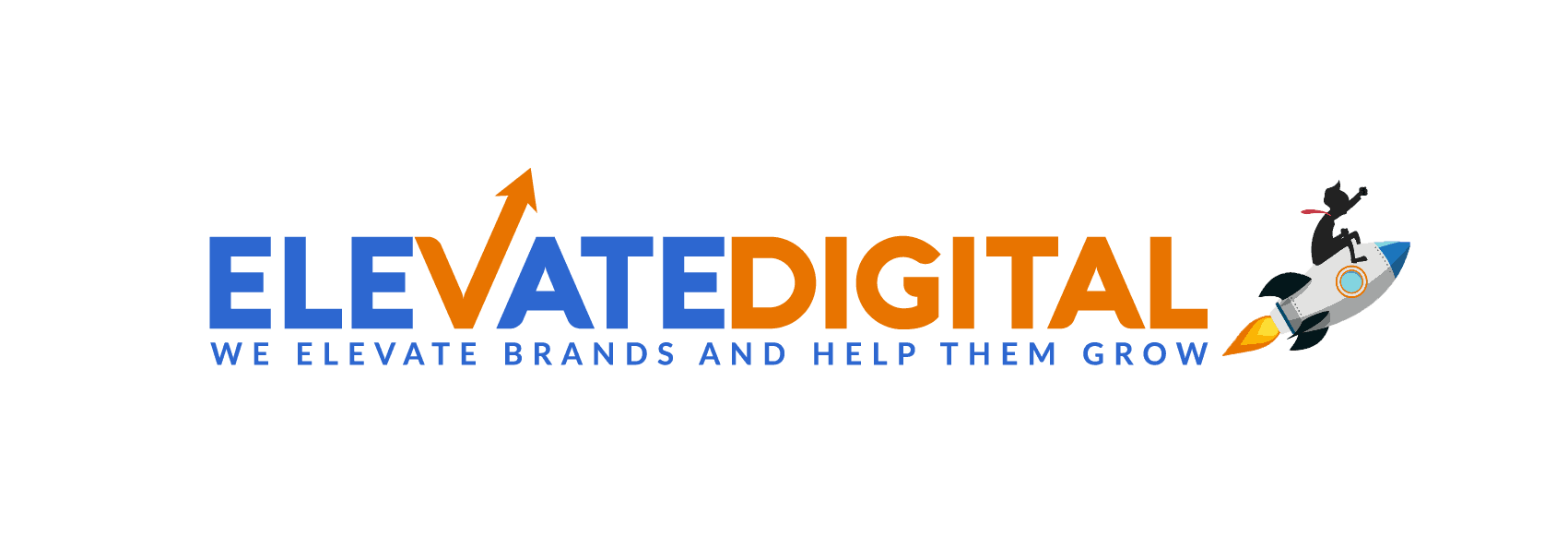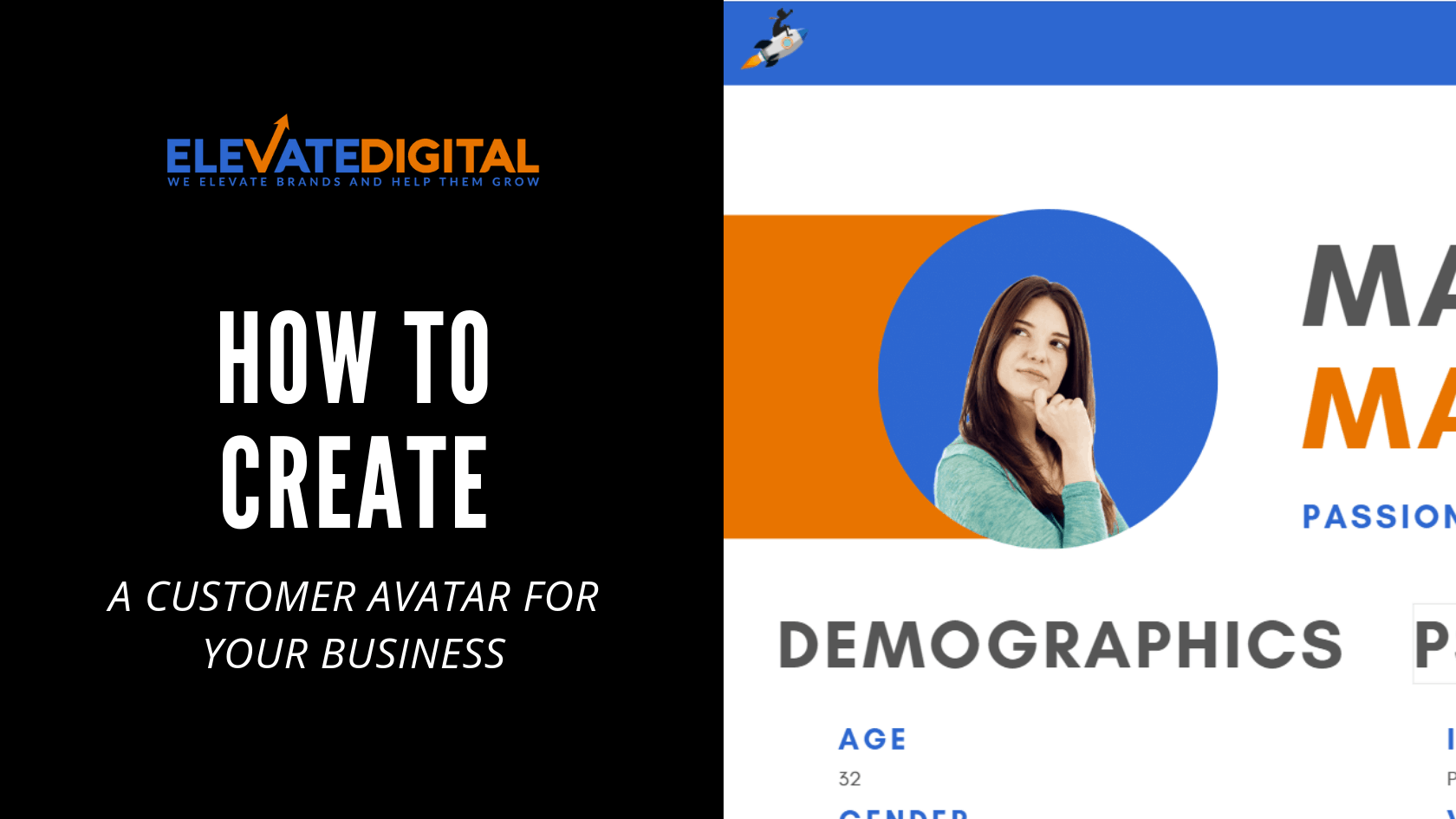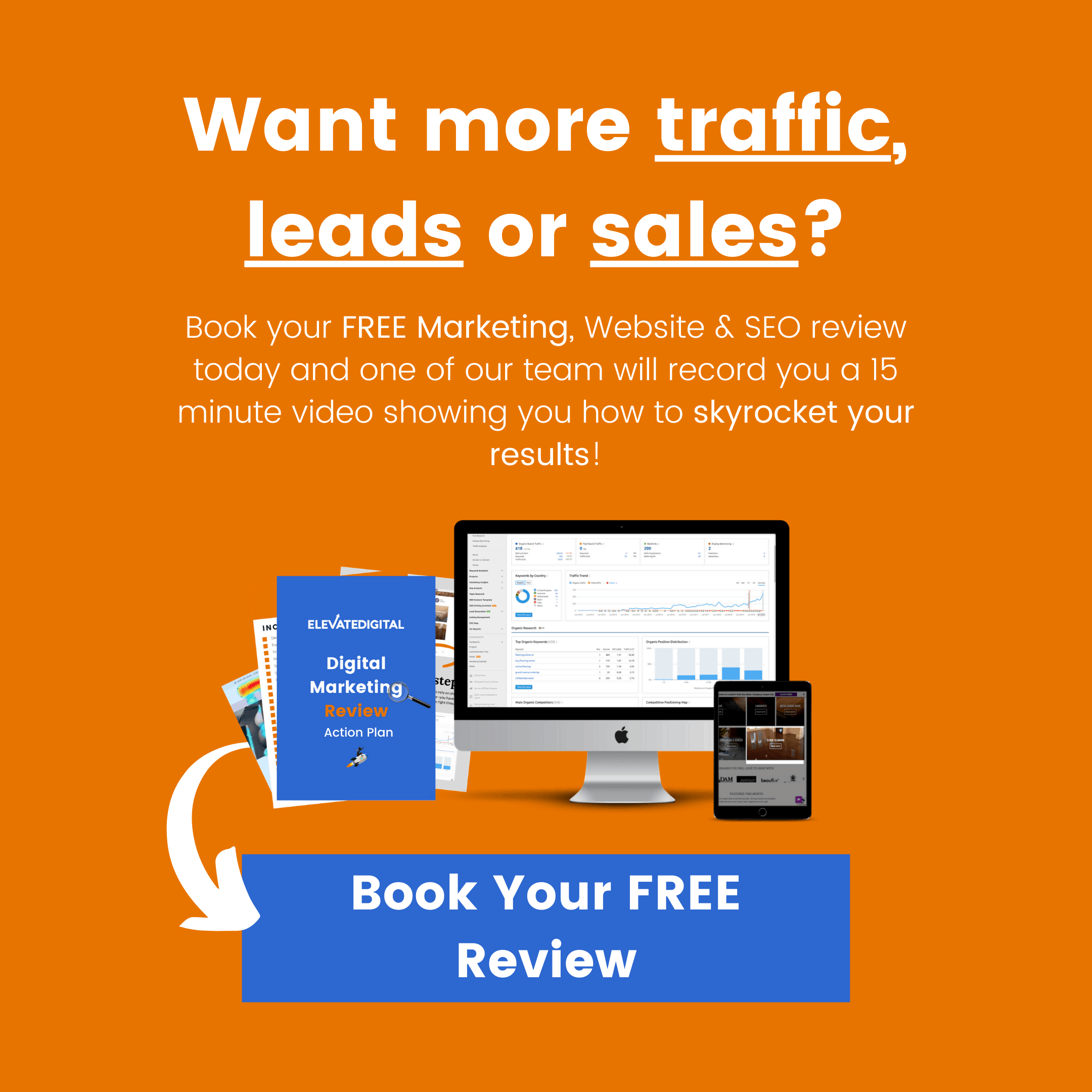A customer avatar (sometimes referred to as a customer persona, ideal customer profile or buyer persona) is one of the most powerful things you can create for your business.
In fact, we’ve seen several businesses skyrocket their results just from gaining clarity on this one area.
And once you’ve got this really dialled in, almost EVERYTHING else becomes so much easier as mentioned in this article by Forbes.
But if you’re not sure how to start or to how to create a customer avatar for your business, fear not!
We’ve got you covered with this guide including a walk-through video and free downloadable worksheets below:
So, What Is A Customer Avatar & Why is It So Important?
There’s an old expression in marketing...”if you try to speak to everyone, you’re basically speaking to no-one”
In fact, you might aswell be talking to a brick wall:
In a nutshell, a customer avatar is a fictional representation of your ideal customer. It helps you to build relationships with the right customers and cater your marketing message to them specifically.
Contrary to popular belief though, creating a customer avatar or buyer persona, isn’t just about segmenting your audience by demographics like age and gender…
We like to think of your customer avatar as being made up of psychographics more than just demographics. What are their core fears and desires – those key drivers that cause them to make buying decision.
After all, if you don’t have at least a vague idea of who your customers is; their pains, concerns or ambitions. Your marketing will be boring and vanilla and won’t speak to any of those emotional triggers/drivers which ultimately are what lead us to making purchasing decisions.
And yes, this applies to both B2B and B2C brands…
But Won’t Creating A Customer Avatar Or Buyer Persona LIMIT My Reach?
Whenever we speak to clients about creating a customer avatar there is always a lot of resistance…
“But we have lots of different customers”
“We work with a range of different people”
“I don’t want to limit my potential customer base”
The irony is, the more you try to widen that buyer net, the less appealing your marketing will become to ANY of them.
Here’s why…
Think about the problem you solve as being a dart board:
There are LOTS of different people on that dart board you can solve a problem for.
However, when you don’t pick one segment of that (the bullseye), you end up sounding like every other company out there and your marketing becomes “noise” and will get overlooked and ignored.
Remember, people aren’t one dimensional. For example, a 21 year old female is probably a very different person Monday morning than she is on a Friday or Saturday night. Let alone how she changes over the years!
When you then introduce an age “bracket” to your avatar like “24-34 years old” it becomes wayyyy to broad and generic.
So instead, just pick ONE individual who you know your product or service can REALLY help (and who you’d love to work with)
GIve them a name, think about what they do at the weekends, what kind of music are they listening to, what Netflix shows are they watching, what are their deepest darkest desires.
This will allow you to create content effortlessly because you’re now talking to one person instead of racking your brain for hours on how you can speak to ALL the facets of your audience.
“But what about all our other potential customers!?” I hear you scream in dismay…
Well stick with me here.
Have you ever wondered why when you watch your favourite movie or book, you can feel such a strong connection and compassion toward the charecters – even though you might not be in the EXACT same situation as them. That charecter might even be a completely different age, race or gender!
This happens because when we read or hear stories/content, our brains our hard-wired to interpret that story through our own lens.
To apply the story to our own circumstances and find elements of relatability.
But here’s the thing, if those movies and stories didn’t have HIGHLY specific charecters, that same level of compassion and connection simply wouldn’t be possible.
The same thing happens with content and marketing.
I can read an ad, that maybe doesn’t exactly apply to me, but the specificty with which it’s written allows me to FEEL something, that simply wouldn’t be possible if they’d tried to speak to everyone.
Check out this example by Chatbooks…
They’ve created a specific customer avatar in VERY specific family situation.
However, even if you watch this as a young mum who maybe only has one kid. You can probably feel and relate to the message being portrayed.
So even thought they’ve been very granualar and specific in their content, they’ve actually widened their reach because having that clarity on a SINGLE specific avatar has allowed them to create content that ACTUALLY gets watched. Mainly because it tells a specifc and engaging story and subsequently doesn’t feel generic or bland.
As such, now they’ve hooked you in with the content and you’re now resonating on an “emotional” level – if the overarching PROBLEM they solve, is also a problem that you have, you are now infinitely more likely to buy even if you’re not this exact avatar.
Why Create A Customer Avatar (Sometimes Referred To As A Buyer Persona)?
To effectively market any product or service, the most essential thing you must do is get crystal clear on WHO your ideal customer avatar is.
Not only WHO they are but also where they are hanging out, their behaviours, their challenges, fears, etc…
Getting clear on this avatar will impact virtually every aspect of your marketing and sales process including:
Content Marketing & SEO – What blog posts, videos, podcasts, Lead Magnets, etc. should you create to attract and convert your avatar?
Paid Traffic & PPC – Which ad platforms should you buy traffic from and what targeting options should you use?
Business Website & Copywriting – How should you describe your business in a way that isn’t bland and generic that compels your avatar to buy?
Email Marketing – Which avatar should receive a specific email marketing campaign?
It can also significantly improve your website conversion rate as mentioned here.
After all, it’s a person that buys our products and services. It pays to get clear on the characteristics of that person.
That way you can find and present them with a message that moves them to action.
It can also help to think about who your ideal customer isn’t just as much as who they are as this will allow you to get much more specific with your marketing.
What to think about when creating your customer avatar
There are the 5 useful components to think about when building your customer avatar…
In some cases, you’ll need to survey or have conversations with existing customers. This will help you accurately flesh out your customer avatar.
In other cases, you’ll be intimately familiar with the characteristics of your ideal customer.
But either way, let’s jump in and take a look at each major section of the Customer Avatar Worksheet:
1. Goals and Values
We begin with the goals and values of your ideal customer avatar as this is what you’ll need to align your product/service with.
Make note of the goals and values that are most relevant to the products and services you offer.
This will help you speak to a desired-end outcome and start painting a before-and-after grid for your customer that ultimately promises a transformation.
2. Sources of Information
This section of the Customer Avatar Worksheet is critical to determining the “where” of your customer avatar.
Identifying these sources will also help you work out the best places to advertise to get in front of your perfect customer.
BONUS TIP: Use the “But no one else would” trick when filling out this section of the worksheet. You’ll simply complete sentences like these…
✅My ideal customer would read [BOOK] but no one else would.
✅They would subscribe to [MAGAZINE] but no one else would.
✅If they had the chance, they would attend [CONFERENCE] but no one else would.
Are you getting the picture?
The idea is to find the niche books, magazines, blogs, conferences, gurus, etc. your ideal customer would be attracted to.
For example, if you are in the golf products market – you wouldn’t want to assign Tiger Woods as a guru.
I mean you could do, but it’s a little generic!
Tiger is someone that even non-golfers know about.
Instead, choosing a more niche golfer like Rory McElroy will allow you to hone in on your ideal customer – and exclude everyone else.
Also, when running a Facebook Ads Campaign, you’ll often be able to laser target your audience by focusing on these interests.
3. Demographic Information
Applying demographic information will really help to bring your customer avatar to life. But remember, this will likely vary and shouldn’t be the primary factor of your avatar.
BONUS TIP: Try writing out a favorite quote or phrase you think your customer avatar would often use. This can really help you get inside the head of your ideal customer and some of their core drivers
Demographic information like age, gender and location will give your customer avatar a look and feel.
This doesn’t mean you can only serve customers in a particular age group or demographic. It just helps to build a connection with potential customers in your marketing and see them as a human, not just a number.
4. Challenges & Pain Points
Understanding the challenges and pain points of your customer is critical for creating content that truly connects.
This will help you speak to the problems they are currently facing and show that you understand.
5. Objections and Roles
Why would your customer avatar choose NOT to buy your product or service?
These are called “objections” and they must be addressed in your marketing.
You must also determine your avatar’s role in the purchasing process, especially in B2B.
Are they the primary decision maker? Are they a decision influencer?
Understanding your ideal customers decision making process is paramount to the success of your digital marketing and advertising campaigns.
Building Multiple Customer Avatars
So by now, you should have a clear picture on how to create a customer avatar for your business!
But don’t stop there; once you get the hang of it, you’ll be churning out multiple avatars representing the different segments of your market.
This can be incredibly important in the B2B space where you may have multiple stakeholders involved in a buying decision and consequently need to have several marketing segments, each with their own messaging/positioning.
After all, the reason for a HR Manager buying something, may be very different to the CEO’s.
But as mentioned above, the key is to create just ONE persona to represent each segment.
It’s also worth noting, the resources required to create a content marketing strategy for multiple market segments can be extremely high.
If you’re a startup, we’d suggest picking one core persona to hone in on at the beginning.
This will allow you to gain initial traciton more quickly and generate the revenue and resources needed to effectively expand into other segments.
Examples Of A Customer Avatars & Buyer Personas
One of the best example of using a customer avatar to grow your business is the now billion dollar brand Gymshark.
Whilst they are now recognised as a global fitness brand with a huge audience, they didn’t start this way.
In fact, their founder, Ben Francis, started the company by offering string vests to beginner/amateur bodybuilders who would have otherwise been drowned in full-size string vests for competing bodybuilders.
This laser-focused specificity allowed them to gain their initial traction and build an audience, which over time then expanded to a wider audience.

It can be extremely scary trying to niche down or create a specific avatar for a small business as you may feel like you’re shutting out a huge portion of your potential customers.
The irony is, when done right, the opposite happens and you’ll actually find it much easier to gain traction because you’re marketing becomes more relevant instead of simply being lost in a sea of noise.
That growth and traction can give you the money you need to expand the brand and reach wider audiences.
Want To Increase Your Traffic, Leads & Sales?
Book your FREE website review today and we’ll record you a personalised video audit showing you how to attract more of your ideal customers and skyrocket your results!
- Highly-Effective DTC Marketing Strategies & Examples - February 28, 2024
- How To Set Paid Media Marketing Budget - October 16, 2023
- The Ultimate Guide To A/B Testing - September 23, 2023






